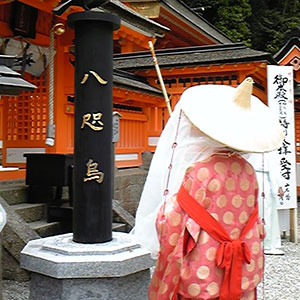KuhonbutsuStroll through Edo period temples, castle ruins and traditional shopping streets
- What is Wa-sanpo?This is a project where the swordsmen of "Chitose: Exchange of Harmony and People" take walks around various places. We will introduce famous places, famous sites, sightseeing spots, restaurants, etc. in each area.
Japan Travel Samurai x "Japanese and People's Exchange Chitose" project "Japanese Walk". In the second installment, we went around Kuhonbutsu Station in Setagaya, Tokyo with actor and sword fighting instructor Yuya Shimada.
What is the Kuhonbutsu area?
The Kuhonbutsu district of Setagaya Ward is a small town made up of Okusawa 4-chome to 8-chome and Tamagawa Denenchofu 1-chome and 2-chome. Around Kuhonbutsu Station on the Tokyu Oimachi Line, there is a traditional shopping street, and as you move away from the station, a quiet residential area appears. You can also feel nature at Kuhonbutsu Joshinji Temple, from which the place name "Kuhonbutsu" originates, and the green path that runs from Joshinji Temple to Midorigaoka Station.
The starting point is Kuhonbutsu Station on the Tokyu Oimachi Line.
Kuhonbutsu Station on the Tokyu Oimachi Line is a long-established station that opened in 1929. It is about 600 meters from the neighboring Jiyugaoka Station, so it is within walking distance, but we recommend taking the train here.
In fact, Kuhonbutsu Station is a famous station for train enthusiasts. The reason is that the doors of one car closest to Futako Tamagawa cannot be opened, a so-called "door cut." Although the Tokyu Oimachi Line is a five-car train, the platform is only long enough for a four-car train, so one car's worth of space sticks out. The platform cannot be extended because there is a railroad crossing right next to it.
Door cuts are inconvenient and are now disappearing. Kuhonbutsu Station is the only station on the Tokyu Line that has door cuts, so be sure to pay attention when you get on the train and look out for them.
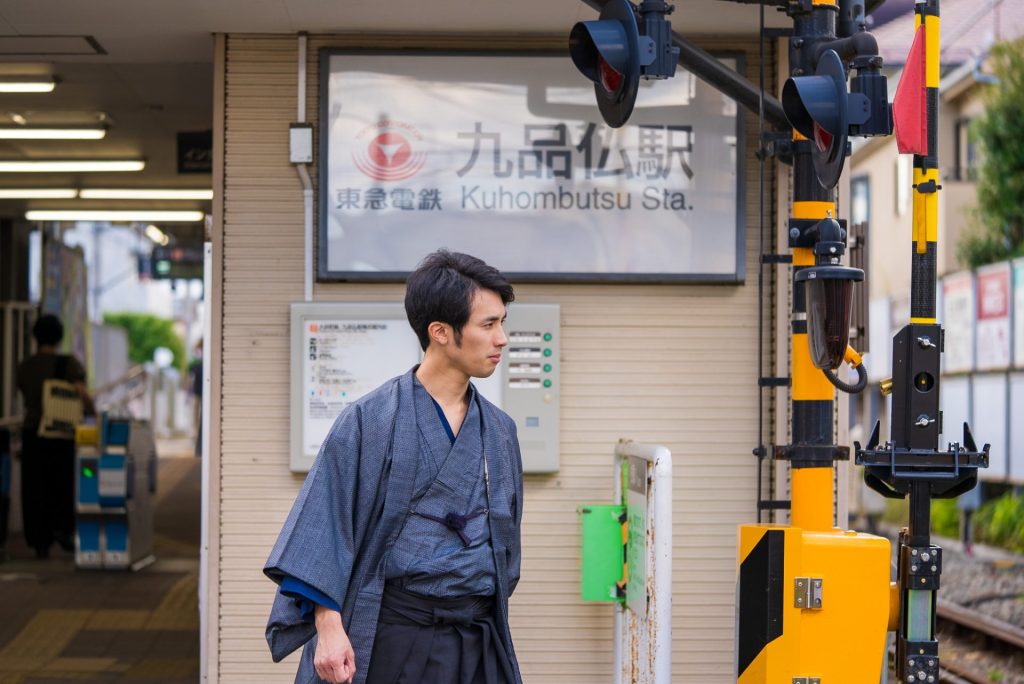
The lush greenery of Kuhonbutsu Joshinji Temple, protected by the Kuhonbutsu
About a 5-minute walk from Kuhonbutsu Station, you will come across the Jodo sect temple "Kuhonzan Yuizai Nembutsuin Joshinji (Kuhonbutsu Joshinji)" surrounded by greenery. This ancient temple was founded by the Jodo sect priest Kaseki during the reign of Tokugawa Ietsuna in 1678, and the layout of the lecture hall and other facilities has remained almost unchanged since then.
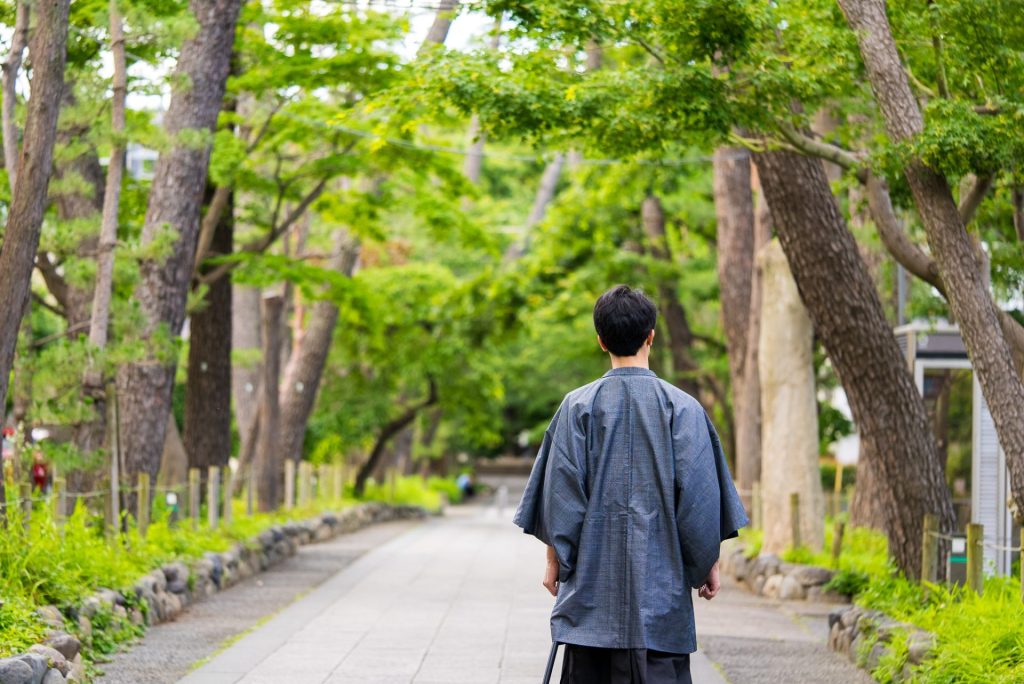
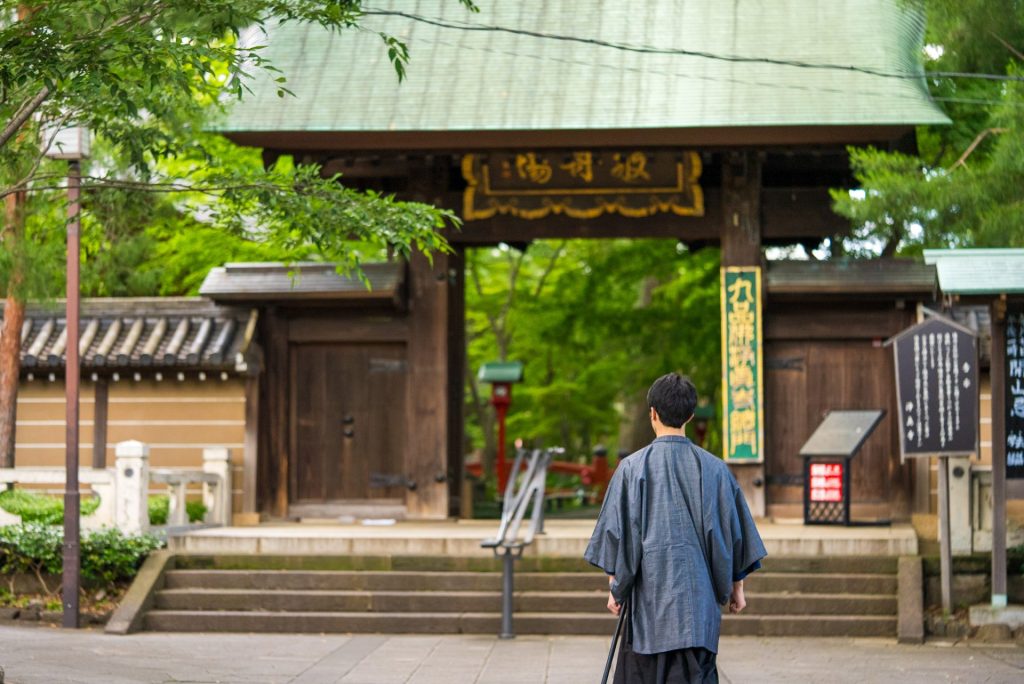
The lush grounds are filled with pure air, making you feel refreshed. Just to the left of the main gate from the approach is the Enma Hall, where King Enma resides, with Datsue-ba and Ken'e-o glaring at him. It is often said that if you lie, King Enma will pull out your tongue, but this spot has a great atmosphere that makes the phrase "straighten up your collar" perfect.
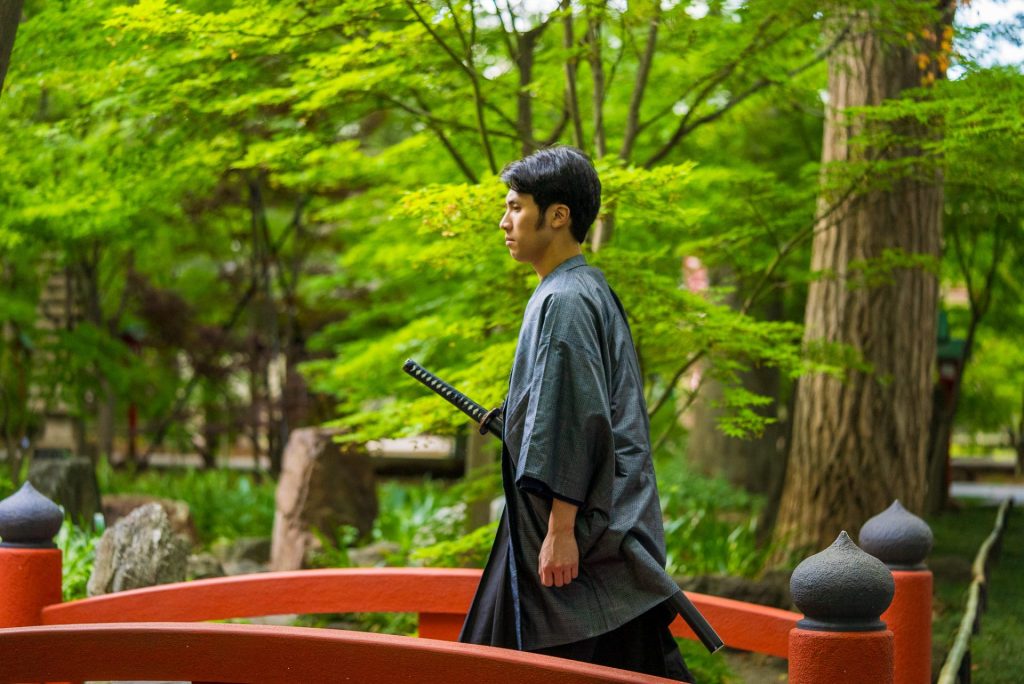
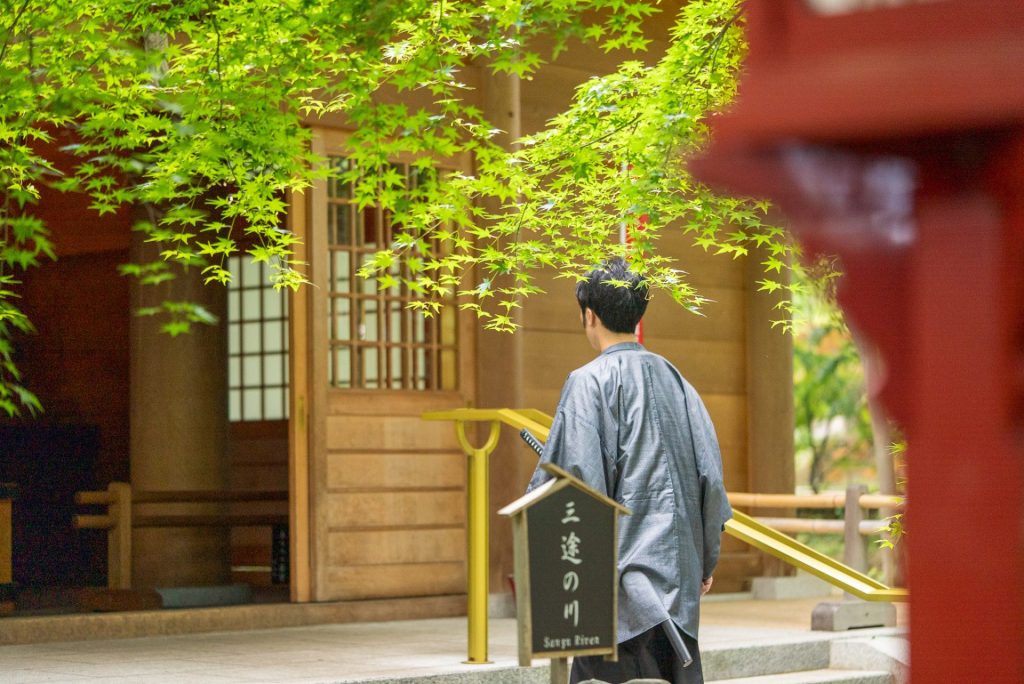
The principal image of the temple is Shaka Nyorai. Opposite the Ryugoden (main hall) where the principal image is enshrined are three Amida halls, Johondo, Chuhondo, and Gehondo, each of which contains three 2.8m-tall Amida Nyorai statues made during the Edo period, for a total of nine statues. This is also the origin of the place name "Kuhonbutsu."
The reason why there are "nine ranks" is because in Buddhism, there is a teaching that there are nine different ranks (= nine ranks) in paradise depending on the depth of one's faith. They are broadly divided into upper rank, middle rank, and lower rank (Jobon, Chubon, Gebon), which are each further divided into upper rebirth, middle rebirth, and lower rebirth. 3 x 3 = 9 ranks. Incidentally, these "Jobon" and "Gebon" are also the origins of the words "Jobon" and "Gebon" used in expressions such as "refined behavior" and "vulgar person."
There are three of each of the nine Buddha statues, all with different mudras (finger shapes). Be sure to take a look and compare them.
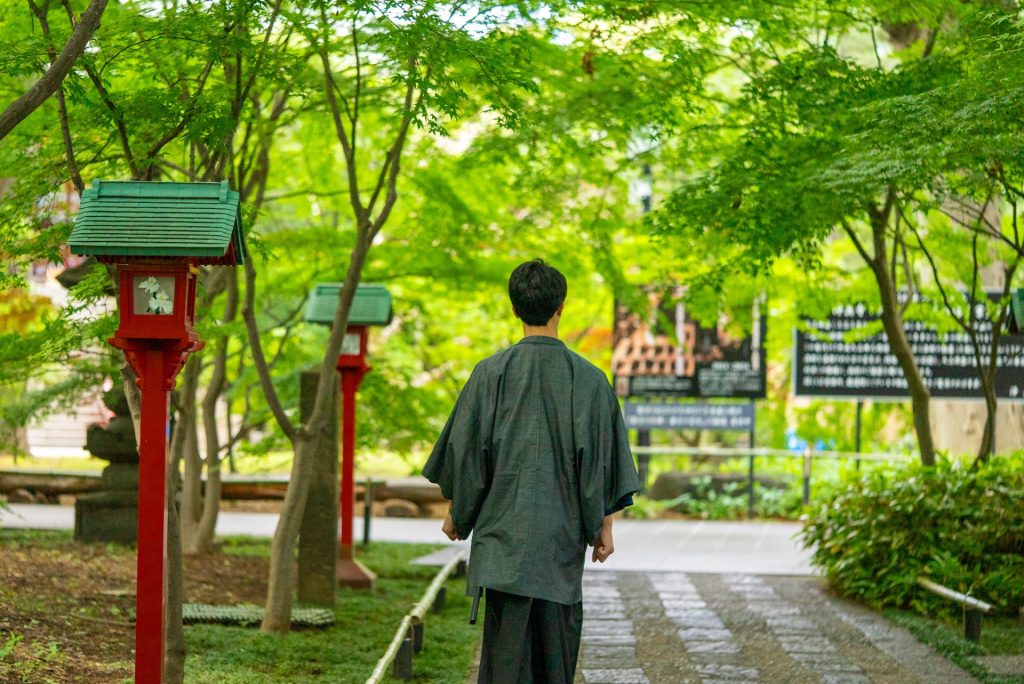
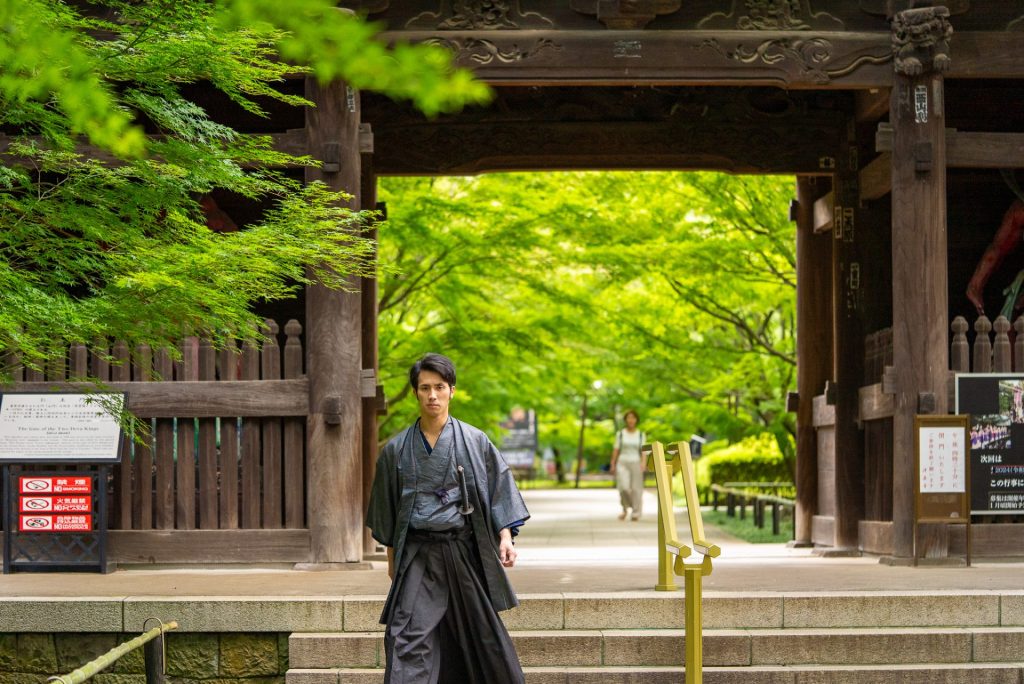
Castle lovers, check it out! "Okusawa Castle" and the Sagikusa Legend
The site of Kuhonbutsu Joshinji Temple was originally the site of Okusawa Castle, which was built by the Kira clan, who ruled Setagaya in the Middle Ages, and was protected by their vassals, the Ohira clan. In 1590, when the Hojo clan was destroyed by Toyotomi Hideyoshi's attack on Odawara, the Kira clan and the Ohira clan went into seclusion in Todoroki, and the castle was abandoned. Remains of the earthworks surrounding the temple grounds remain.
There is a legend about a white heron at Okusawa Castle. During the Warring States period, Tokiwahime, the daughter of Ohira Dewamori, the lord of Okusawa Castle, became a concubine of Kira Yoriyasu of Joshu, Setagaya. Tokiwahime became Yoriyasu's favorite, but the other concubines became jealous and bullied her, spreading bad rumors about her to Yoriyasu's ears. Eventually, Tokiwahime began to be treated coldly by Yoriyasu, so she decided to commit suicide. She tied a suicide note to a white heron that she had loved since childhood and sent it towards Okusawa Castle.
However, Yoriyasu shot down the egret. After reading the suicide note, Yoriyasu hurried back to the castle, but Tokiwahime had already committed suicide. Yoriyasu mourned Tokiwahime and buried the egret near Okusawa Castle. Grass grew at the spot where the memorial was held, and a white flower appeared, resembling a heron spreading its wings. This is the "sagi grass", and it is also the flower of Setagaya Ward. From July to August, you can see it at the Setagaya Ward Sagi grass garden on the temple grounds.
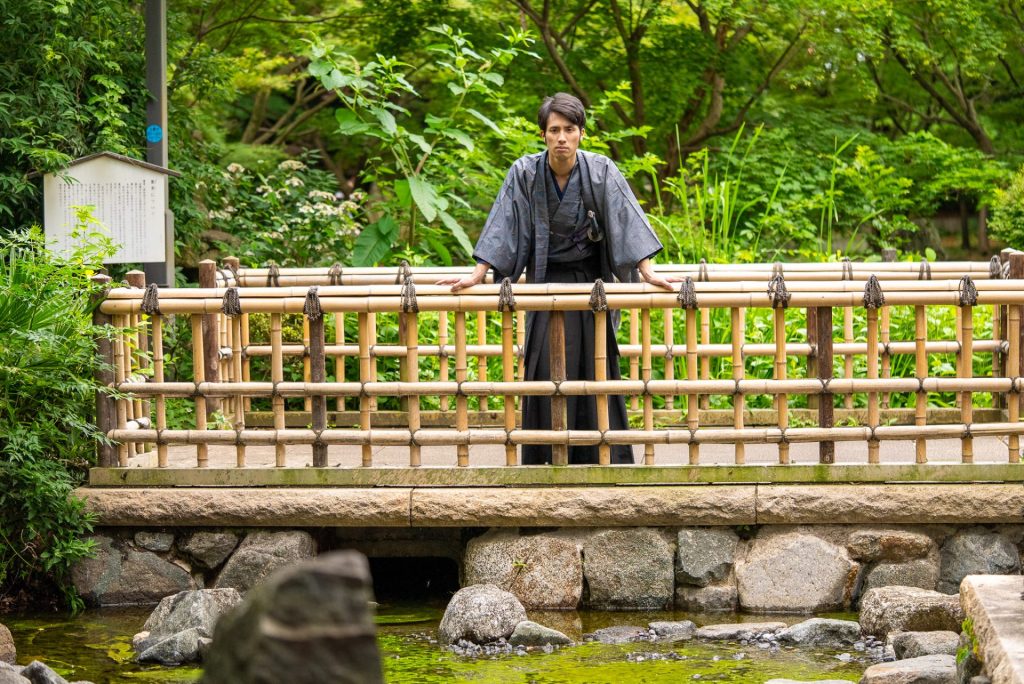
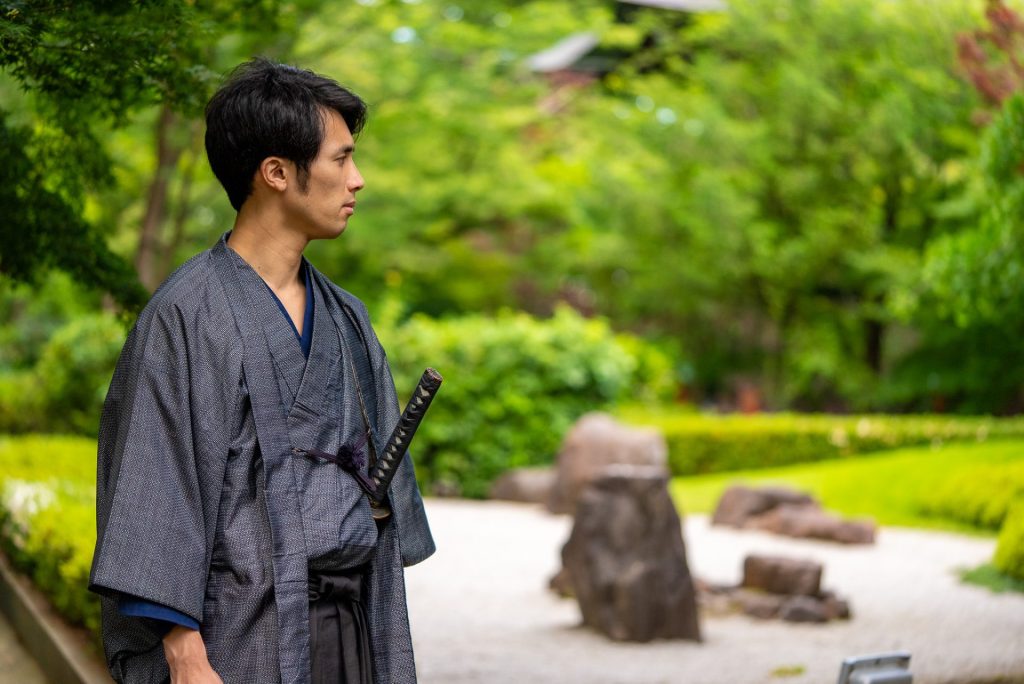
Handmade tofu "Mori Tofu Shop"
From Kuhonbutsu Joshinji Temple, we leisurely returned to Kuhonbutsu Station. After walking through the old-fashioned shopping street, we arrived at "Mori Tofu Shop" in front of the station. The tofu and fried tofu are carefully handmade using soybeans from Toyama and Saga prefectures and are exquisite. We especially recommend "Nigari Momen", which is made from 100% nigari. The fried tofu has a soft skin and is perfect for inari sushi.
The deep-fried tofu, which is on sale from 5pm, can be eaten immediately after pouring the special sauce over it. During our stroll, Shimada-san ate it all up in no time, exclaiming, "It's so good!"
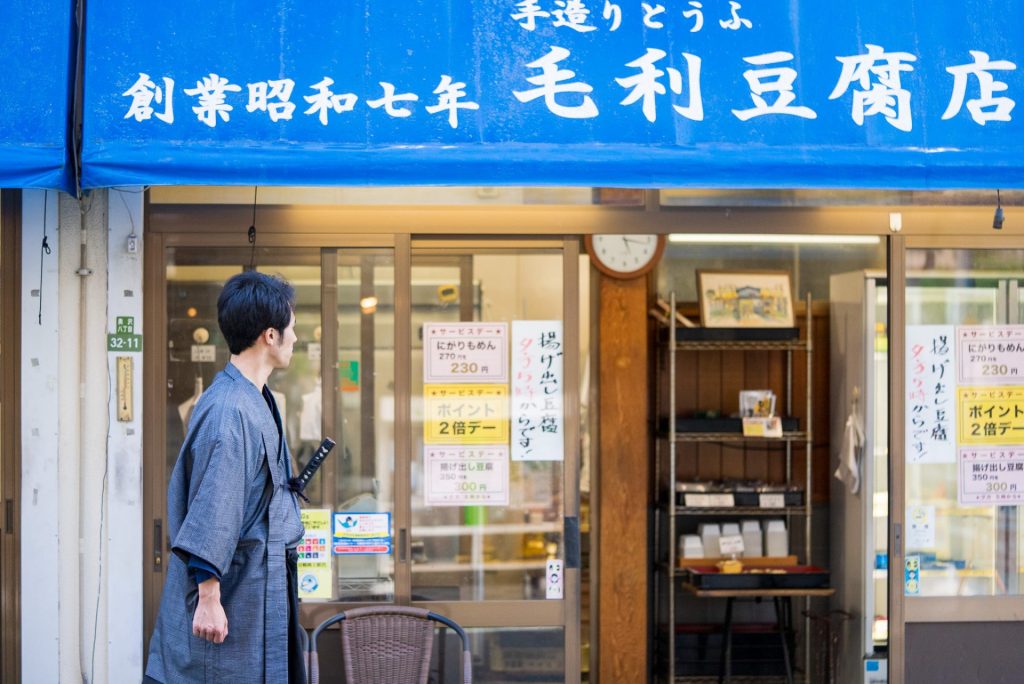
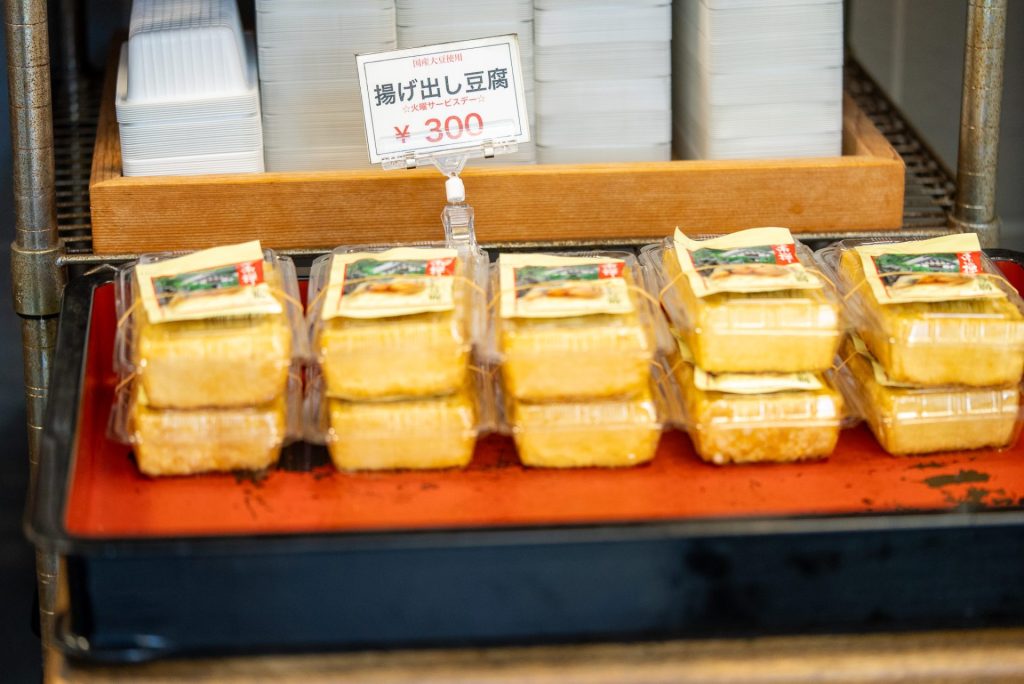
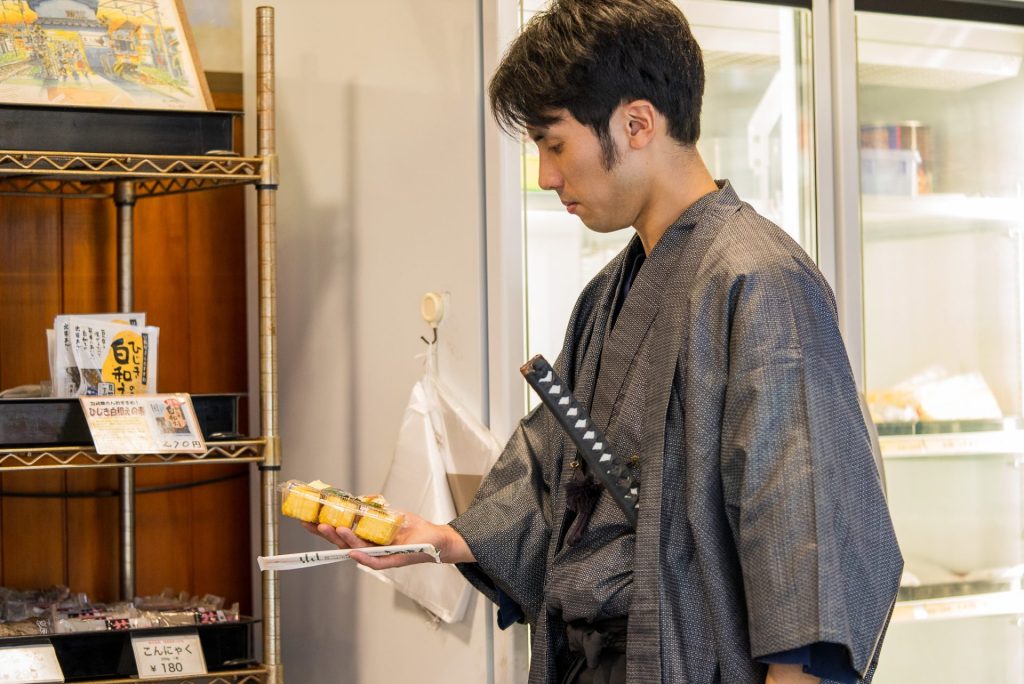
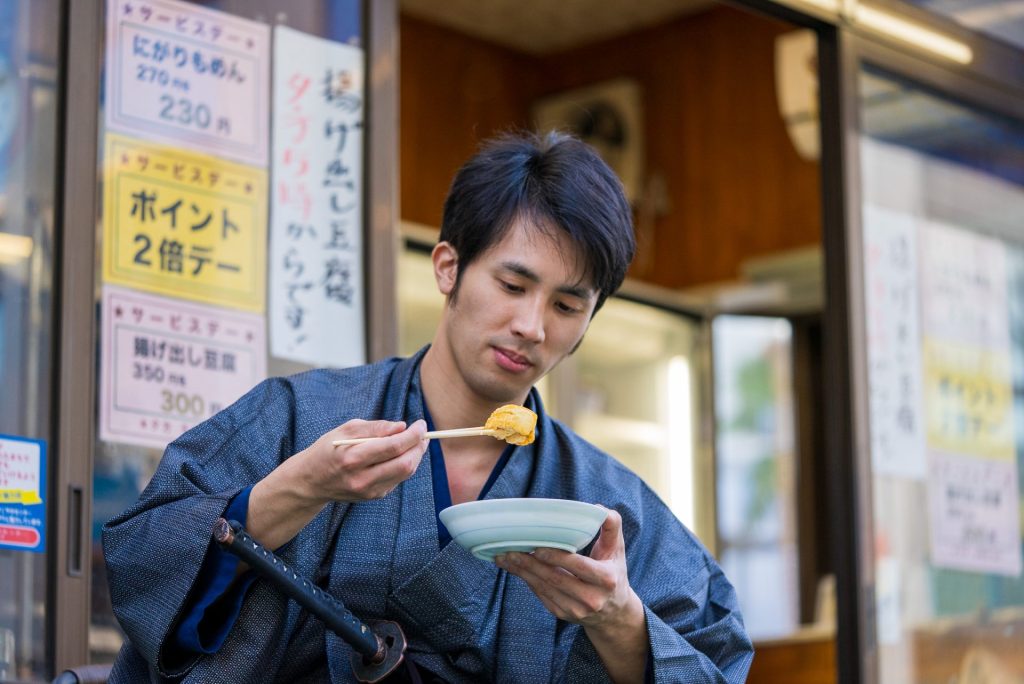
"Drinkable Daifuku" - It Wokashi, Tokyo store
Next we visited "It Wokashi Tokyo Store," which sells daifuku that is "soft enough to drink." It Wokashi is a new brand run by the 16th generation owner of "Obaraki Honpo Daitokuya Nagahisa," a Japanese confectionery shop in Suzuka City, Mie Prefecture, that has been in business for over 300 years. It sells a new type of fresh cream daifuku that is "soft enough to drink." It is a famous store that has been featured in the media many times.
It is impossible to make a softer daifuku than this, and this daifuku melts in your mouth with one bite. When frozen it has an ice cream texture, when partially thawed it has a melting texture, and when fully thawed it becomes so soft that you could practically drink it. Shimada, who loves Japanese sweets, also gave it his stamp of approval, saying, "This was the tastiest one!"
In addition to the basic "Bean Jam & Cream," there are other Japanese and Western flavors such as "Sesame & Mango," "Strawberry & Pink Pepper," "Matcha & Lemon," "Oolong & Almond," and "Grape & Rum." The stylish packaging is also a highlight.
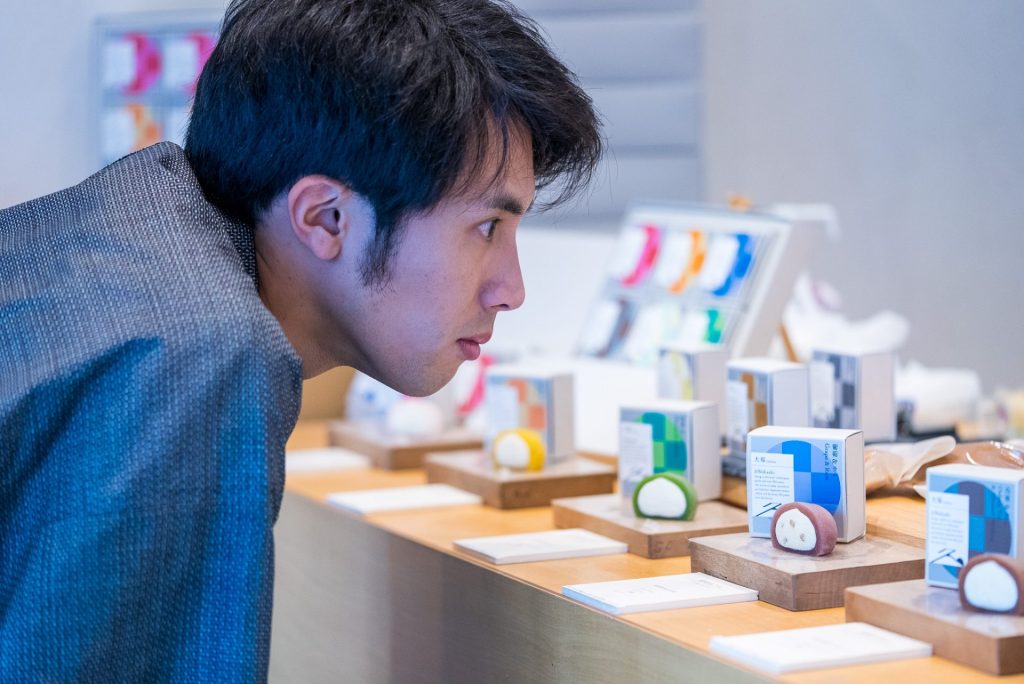
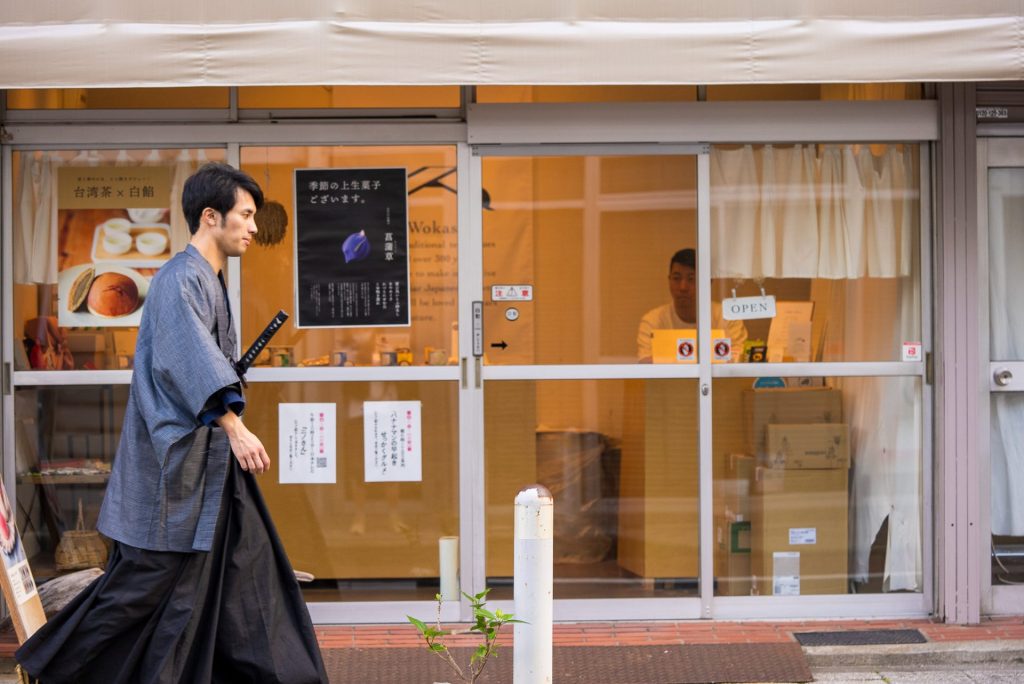
Exquisite cream-filled dorayaki "Shougando"
The last place we visited was "Shougando", famous for its cream-filled fresh dorayaki. The owner of the shop, which opened in 2017, was originally a Western confectioner. He developed the fresh cream daifuku "Tokyo Dora Cream" with the concept of "fusion of Japanese and Western", and this has also been featured in various media.
The wheat flour used is grown in Hokkaido using natural farming methods and no chemical fertilizers are used, the eggs come from herb-fed chickens that are fed marigolds, and the sugar is mineral sugar that makes use of the trace elements contained in sugarcane, all of which are safe and reliable.
Tokyo Dora Cream comes in five flavors: "Bean Jam," "Matcha Azuki," "Raisin," "Chestnut," and "Cream Cheese." In addition to these, they also sell the "Tokyo Wa Dora" series, fruit dorayaki filled with fresh fruit, dango, warabi mochi, and more. You can also eat in at the terrace seats.
This time, I chose Tokyo Dora Cream's "Cream Cheese" and Wa Dora's "Smooth Bean Paste". With one bite of the cream cheese, the aroma of Austrian cream cheese spreads softly in your mouth. It contains homemade lemon puree and is delicious like a rare cheesecake. The smooth bean paste is made from Hokkaido red beans and is a perfect match with the moist dorayaki dough. This is the classic! It was delicious.
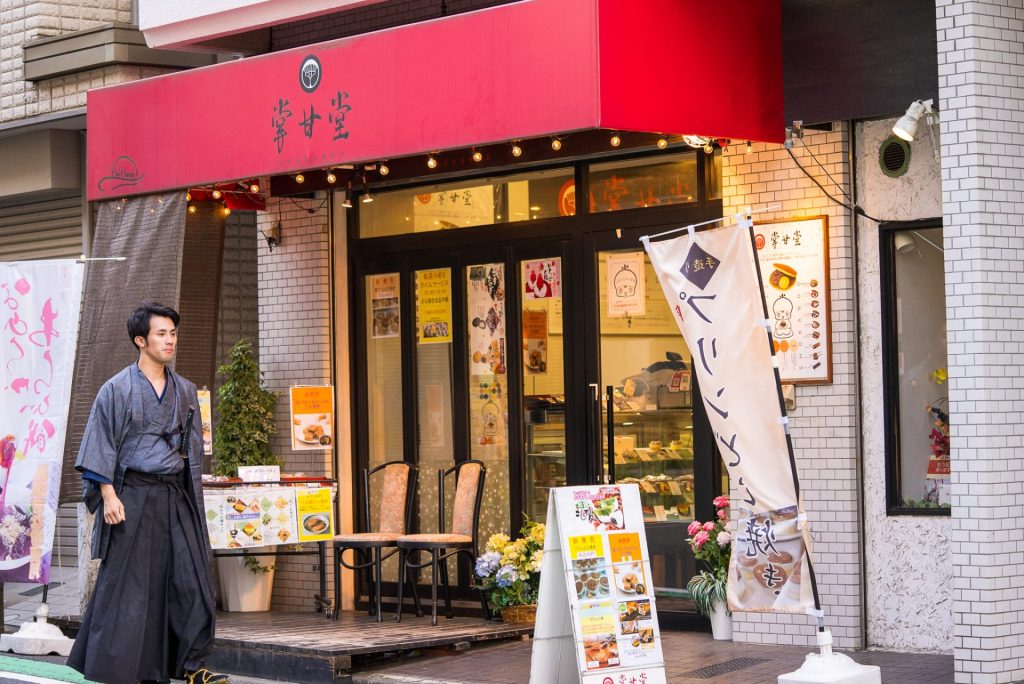
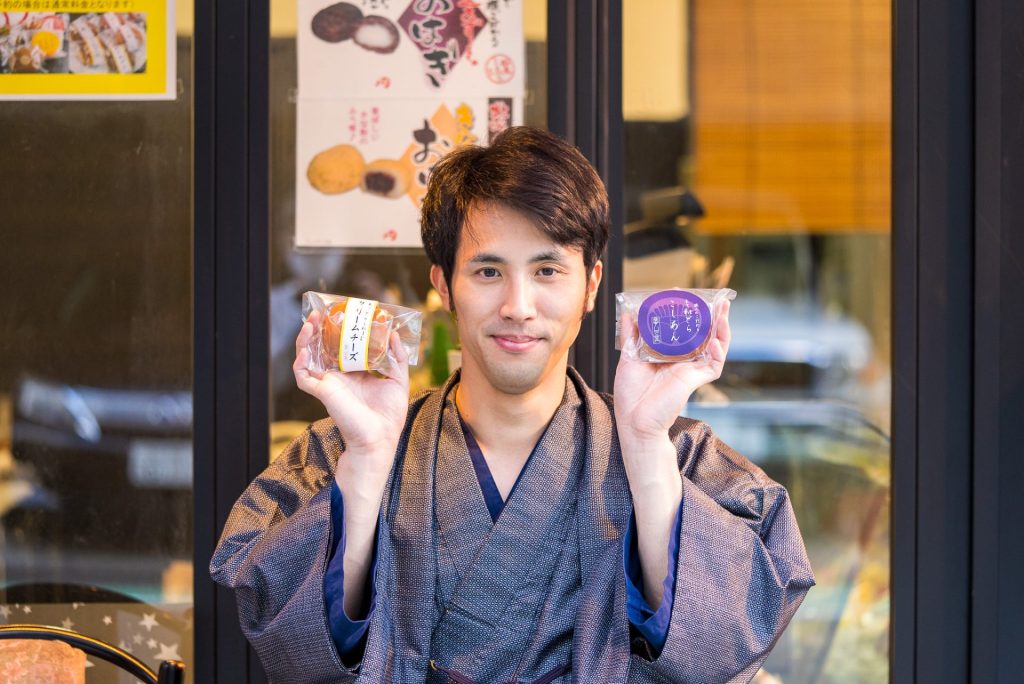
- 【Today's walking course】
- Kuhonbutsu Station → Kuhonbutsu Joshinji Temple → Mori Tofu Shop → It Wokashi Tokyo Store → Shougando
Kuhonbutsu Station has a shopping street with many unique shops! Feel free to stop by the lush and historic Kuhonbutsu Joshinji Temple and enjoy a stroll. - [Spots visited this time]
- "Joshinji Temple" 7-41-3 Okusawa, Setagaya-ku, Tokyo 158-0083
"Mori Tofu Shop" 8-32-11 Okusawa, Setagaya-ku, Tokyo 158-0083
"It Wokashi Tokyo Store" 7-19-17 Okusawa, Setagaya-ku, Tokyo 158-0083
"Shokando" 8-13-10 Okusawa, Setagaya-ku, Tokyo 158-0083

- CastYuya Shimada (actor, sword fighting)Actor. Born in Osaka Prefecture. Special skill is sword fighting. 2nd dan in Kendo and 2nd dan in Kyudo.
She has appeared in many films, including "Avalanche" (Fuji TV), "The Real Culprit Flag" (Nippon TV), and "Tokyo Metropolitan Police Department Zero Division: Life Safety Division Advice Room" (TV Tokyo). She has also appeared in many stage productions, including the play "Sacrificial Princess - Yomi Hirasaka -" (Samurai Sword Performance Team).
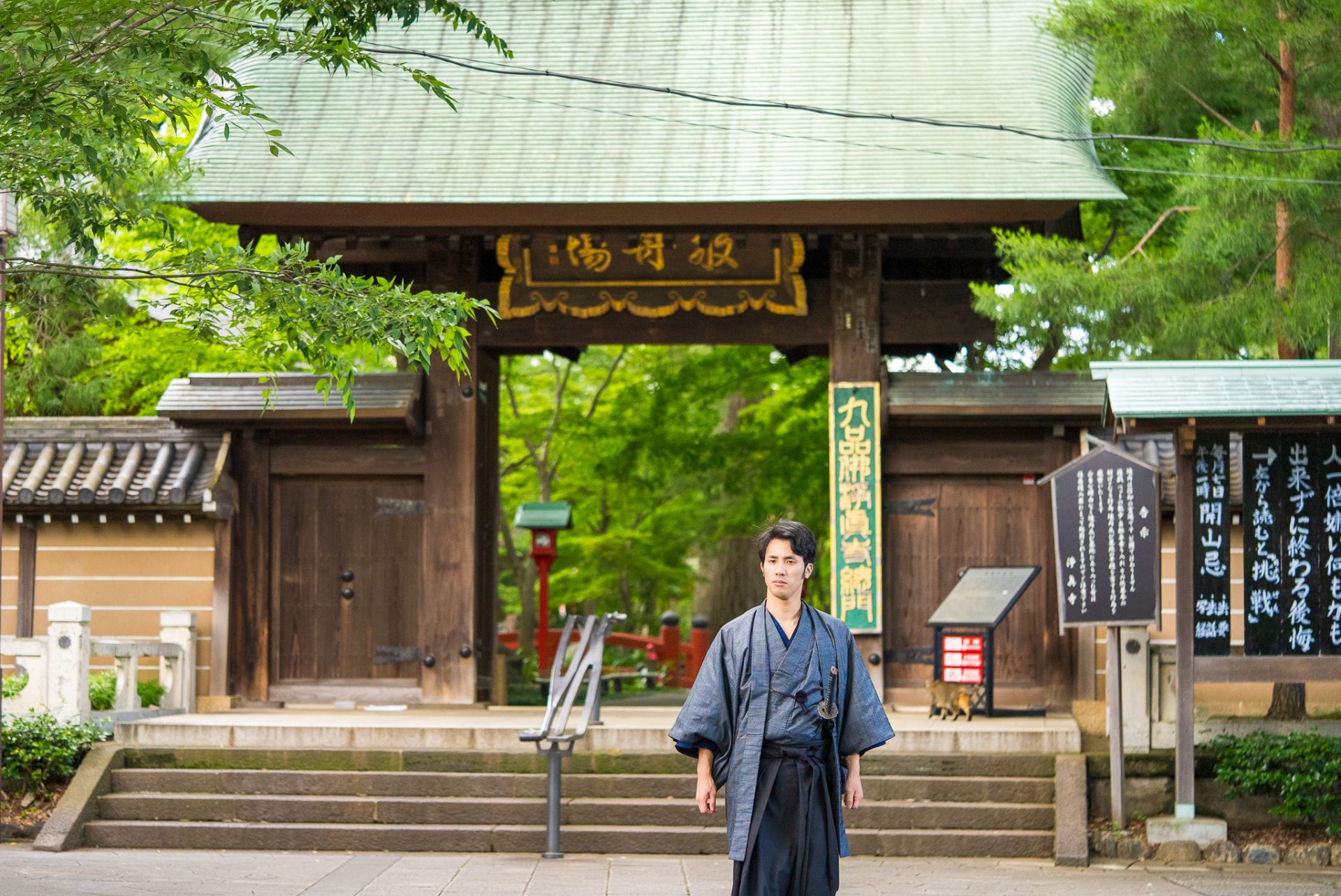
- Article category
- Japanese Walk
- Related castles, temples and shrines
Joshinji Temple

- WriterNaoko Kurimoto(Writer)I am a former travel industry magazine reporter. I have loved history, both Japanese and world history, since I was a child. I usually enjoy visiting temples and shrines, especially shrines, and often do ``pilgrimages to sacred places'' themed around historical figures. My favorite military commander is Ishida Mitsunari, my favorite castle is Kumamoto Castle, and my favorite castle ruins is Hagi Castle. My heart flutters when I see the ruins of battle castles and the stone walls of castle ruins.



